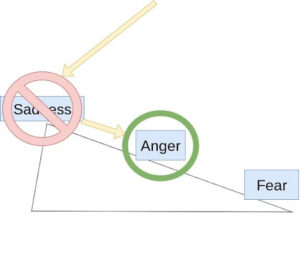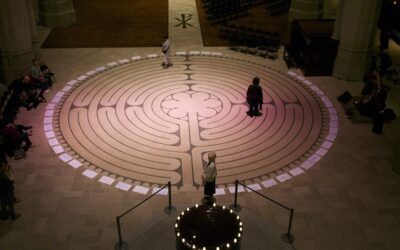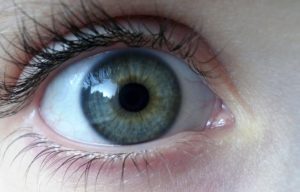
Anger, sadness and fear are the three basic states of our fight or flight system. These are the three basic negative emotions or body emotions. We feel these emotions physically before we process them in the prefrontal cortex because they activate our amygdala and begin our fight or flight state. The emotions recognition worksheet describes this process.
Fear is the absolute flight state. It is the awareness that we have no power to detect or prevent an attack. We hope the world will not hurt us but we think it probably will. We are in a condition of futility, hopelessness and paralysis. It is the least adaptable state. Anger is the awareness that one of our rules or boundaries has been violated. Boundaries are our expectations for how others interact with us, while rules deal how we expect others to behave in general.
Anger is a more adaptable reality than fear because it requires that a person believes that they have (1) some control over their reality and (2) a right to have rules and boundaries. In other words anger lets us recognize that we have the ability to protect ourselves internally and externally. Restoring a patient’s ability to feel justified in anger and to be assertive will often solve anxiety, panic and dissociation symptoms that are caused by a patient feeling incapable of enforcing boundaries. When anger is unavailable as a state we revert to fear.
Sadness is the most adaptable state. Sadness requires us to be in touch with our own vulnerability and have faith in our own capacity for healing. We cannot admit that we are hurting unless we have learned that we can heal. Being in touch with sadness without the knowledge that we can heal means that we experience a terrified hopeless depression or anxiety. Pain without any antidote or end simply feels like panic.
When sadness is not available to us we will revert to anger. Without the ability to feel hurt about somethings we use anger to try to hold onto control all the time. The ability to be hurt could also be understood as the ability to accept things we can’t change about ourselves and about the world. To be hurt is to say “I wish that wasn’t happening, but it’s ok.” Sadness allows us to accept events outside of our own control.
The way that sadness is understood as an emotional reality here must be separated and distinguished from the hopeless and helpless depression that chronically depressed patients feel. The chronically depressed may be the only group that I would contraindicate for this type of therapy. Often the emotional spectrum of depressed patients is due more to a chemical imbalance than an inability to process their fight or flight state effectively. Cognitive therapy may be the most effective approach to making chronically depressed patients participate in activities, like exercise and medication adherence, that change the chemical imbalance affecting cognition.
However, patients with depression that are effectively medicated may benefit from this type of fight or flight awareness and regulation. In patients with depression where the depression is manageable, but apparent the emotion recognition exercise may help patients accept the limitations of their own control and accept their own vulnerability.
Sadness is the most adaptable fight or flight state because to be in touch with vulnerability with a sense of hope is the last best option when bad things happen outside of our control. Real sadness as an emotion state is best understood as the ability to accept things that we wish weren’t true. It is the ability to acknowledge our own vulnerability and have hope for the future. Fear as an emotional state is an overwhelming confrontation with vulnerability that we find hopeless and futile. Fear leaves us unable to have faith or find meaning. Anger is an attempt to protect ourselves from vulnerability. These are the three major negative body emotions that activate our fight or flight.
If you want to do some self therapy work then download the emotion worksheet we use at Taproot here.






0 Comments